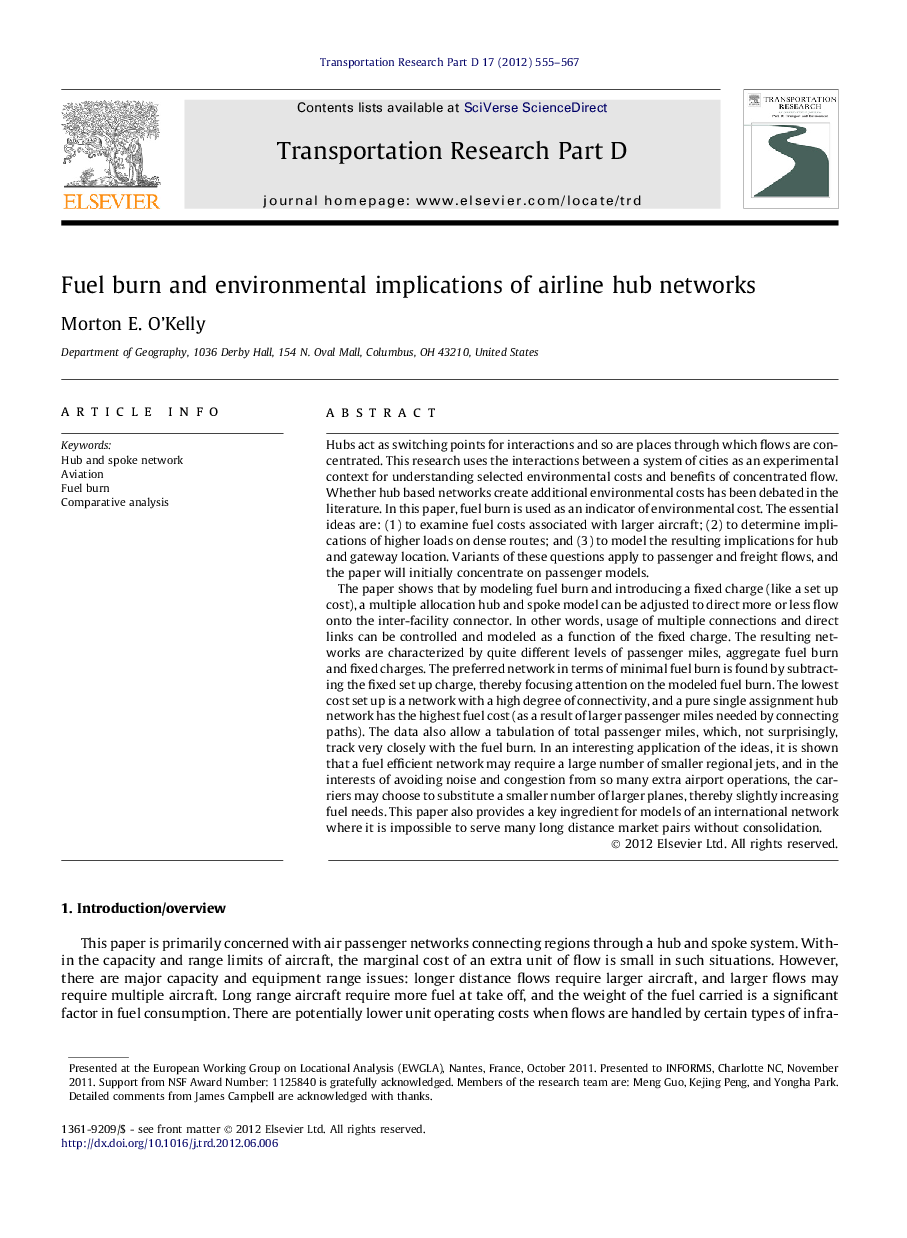| کد مقاله | کد نشریه | سال انتشار | مقاله انگلیسی | نسخه تمام متن |
|---|---|---|---|---|
| 1065969 | 948661 | 2012 | 13 صفحه PDF | دانلود رایگان |

Hubs act as switching points for interactions and so are places through which flows are concentrated. This research uses the interactions between a system of cities as an experimental context for understanding selected environmental costs and benefits of concentrated flow. Whether hub based networks create additional environmental costs has been debated in the literature. In this paper, fuel burn is used as an indicator of environmental cost. The essential ideas are: (1) to examine fuel costs associated with larger aircraft; (2) to determine implications of higher loads on dense routes; and (3) to model the resulting implications for hub and gateway location. Variants of these questions apply to passenger and freight flows, and the paper will initially concentrate on passenger models.The paper shows that by modeling fuel burn and introducing a fixed charge (like a set up cost), a multiple allocation hub and spoke model can be adjusted to direct more or less flow onto the inter-facility connector. In other words, usage of multiple connections and direct links can be controlled and modeled as a function of the fixed charge. The resulting networks are characterized by quite different levels of passenger miles, aggregate fuel burn and fixed charges. The preferred network in terms of minimal fuel burn is found by subtracting the fixed set up charge, thereby focusing attention on the modeled fuel burn. The lowest cost set up is a network with a high degree of connectivity, and a pure single assignment hub network has the highest fuel cost (as a result of larger passenger miles needed by connecting paths). The data also allow a tabulation of total passenger miles, which, not surprisingly, track very closely with the fuel burn. In an interesting application of the ideas, it is shown that a fuel efficient network may require a large number of smaller regional jets, and in the interests of avoiding noise and congestion from so many extra airport operations, the carriers may choose to substitute a smaller number of larger planes, thereby slightly increasing fuel needs. This paper also provides a key ingredient for models of an international network where it is impossible to serve many long distance market pairs without consolidation.
Journal: Transportation Research Part D: Transport and Environment - Volume 17, Issue 7, October 2012, Pages 555–567